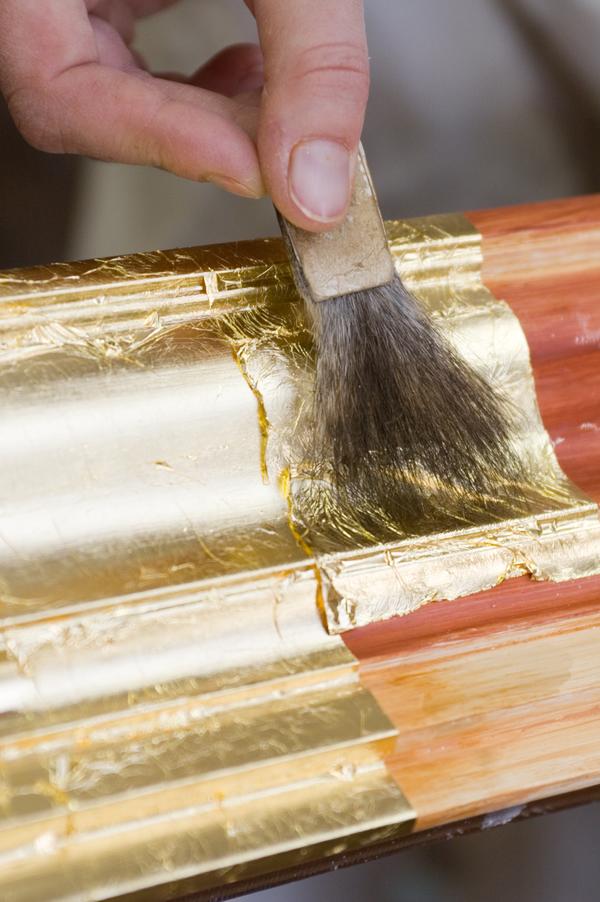Gilding & Faux Painting
Traditional craftsmanship throughout Austria, inscribed 2017
Gilding and faux painting have been practiced since ancient times in order to make objects appear as if made from solid gold or other materials. There are various techniques for doing so, such as poliment and oil gilding. Faux painting (known as "Staffieren" or, in former times, as "Fassmalerei") denotes the painting and decorative embedding of non-gilded surfaces. This includes marbelising, wood imitation, and porcelain imitation. Knowledge of the complex techniques is for the most part passed on orally, and mastering such work takes several years.
The heyday of gilding and faux painting was during the baroque and rococo eras, and in the art nouveau and art deco periods, as well, these techniques were in high demand. From the second half of the 20th century, interest in such work declined considerably; gilding has all but disappeared in contemporary architecture, for which reason less and less craftsmanship businesses are still practicing and passing on the relevant techniques.
Poliment gilding is the mainstay of a gilder’s craft. In this technique, a mixture of animal skin- and bone-based glue and various chalks is applied to a workpiece in several layers. After the surface has dried, it is burnished and perhaps given engraved ornamentation and/or wrigglework, with any embossed applications or pastiglia added subsequently. The adhesive for the gold leaf itself is poliment, a mixture of bole (an earth pigment) and egg white, which is made according to recipes that are individual and handed down orally. With a Fehhaar brush (made from the ear-hairs of a squirrel), a so-called Netze (netting)—a mixture of alcohol and water—is applied. Next, a gilder’s tip (a brush made from the tail-hairs of a squirrel) is used to apply the gold leaf to the workpiece. And in the final step, an agate burnishing stone is used to burnish the dry gold to a high sheen.
Contact
Downloads
- Application form (in German only) 226 KB (pdf)
- Expertise Lercher (in German only) 157 KB (pdf)
- Expertise Orosz (in German only) 382 KB (pdf)


![[Translate to EN:] © J. Ségur/ZED, with the permission of UNESCO](/fileadmin/_processed_/d/b/csm_Convention-2003-IKE_0832a6a47d.jpg)
![[Translate to EN:] © ÖUK](/fileadmin/_processed_/3/9/csm_P1011318_7eac86402f.jpg)

![[Translate to EN:] © Weitblickfilm](/fileadmin/_processed_/9/8/csm_Workshop_17_2dee1e1fd8.jpg)